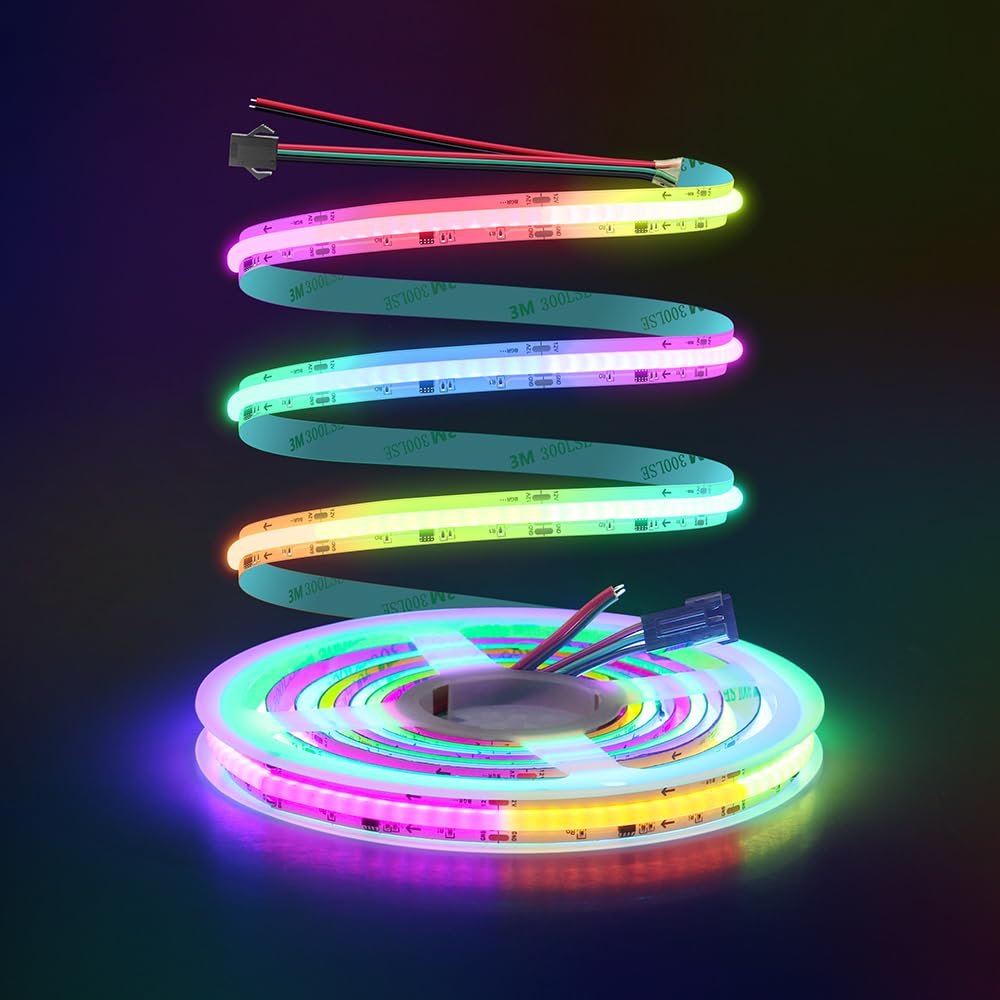1. Package Form:
– SMD LED is packaged using surface mount technology and is typically small, often just a few millimeters long.
– COB LED stands for “Chip on Board” and involves multiple LED chips directly mounted on the same substrate, appearing as a single integrated unit.


2. Light Output:
– SMD LEDs generally have lower power per individual chip, with typical power ratings of tens of watts or less per single chip.
– COB LEDs integrate multiple LED chips on the same substrate, allowing for higher power output, often reaching tens of watts or higher per COB unit.
3. Optical Characteristics :
– SMD LEDs, due to their smaller individual chips, have better heat dissipation and are suitable for applications requiring dispersed light sources, such as LED strips.
– COB LEDs, with integrated multiple chips, offer more concentrated light output, suitable for applications requiring high brightness and uniform light distribution, like indoor lighting fixtures.
4. Heat Dissipation and Size:
– SMD LEDs, being smaller and with individual chips, have relatively easier heat dissipation and smaller size, making them suitable for compact spaces.
– COB LEDs, despite having a larger overall chip size, require more sophisticated heat dissipation due to the concentration of multiple chips, ensuring stability and longevity.
In summary, the choice between SMD LED and COB LED depends on specific application requirements such as desired light output, optical characteristics, heat dissipation needs, and the design constraints of the lighting fixture.



